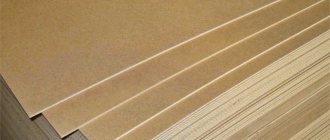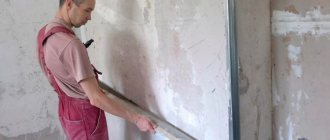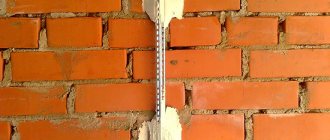In what cases is it recommended to install toilets with glue?
The method, which takes into account the use of adhesive compositions, is gaining more and more popularity among professional craftsmen and self-taught people every year. Most often, this installation option is chosen when a heated floor system is located under the tiles in the toilet room. In this situation, drilling into the cladding may damage it.
Note! This method can also be chosen based on aesthetic considerations. Plumbing fixtures that are not equipped with fasteners look more stylish and impressive in the toilet room.
It is not difficult to carry out such installation correctly, but it should be remembered that installation using an adhesive composition takes quite a lot of time. This is due to the fact that you need to wait until the glue completely hardens. If you ignore this rule, then the connection will become unreliable, and the toilet will wobble or even completely move away from the tile. In order for the adhesive to harden, you must wait 12 to 24 hours.
Which glue to choose: review of the best
Gluing plumbing fixtures to tiles is done using silicone, liquid nails, special mixtures, and epoxy.
When using liquid nails, you should take into account the fact that subsequent dismantling of the product is difficult.
Gluing to silicone is less safe, since using only one product will lead to displacement of the product and possible damage. The quality of the installation depends on the product purchased and the skill of the installer. But this mixture allows for the fastest installation without difficulty or damage.
Gluing with epoxy will take a little time, but will be difficult to dismantle. Removable plumbing fixtures and tiles are damaged.
When choosing a silicone sealant, its components are taken into account: acetic (has an odor, low price), neutral (suitable for any materials, high price). The advantages of this product are: ultraviolet resistance, high adhesion of plumbing equipment, heat resistance, seam flexibility, beautiful surface. These include:
- Ceresit Sanitary sealant - suitable for sealing bathrooms and other equipment used in wet areas. Provides good grip. Prevents the spread of fungus and mold. UV resistant, long service life, flexible. Before application, the surface must be cleaned for better adhesion of the material to the base.
- Baumit Silicone is resistant to ultraviolet radiation, prevents the spread of fungus, the temperature used is from 5 to 35 degrees. Designed for interior plumbing and tiling work. Heat resistant. Available in a 310 ml tube.
When choosing liquid nails, their components are also taken into account: acrylic (water emulsion), neoprene (organic dyes). When choosing for a toilet room, preference is given to neoprene. It has a toxic composition, but is more durable for gluing. Liquid nails are impermeable to water and resistant to mechanical stress.
Liquid nails set quickly, so when installing, do not hesitate to make adjustments.
Liquid Nails Review:
- Belife is a unary polyurethane mixture. High initial grip strength. Environmentally friendly.
- LIQU >
Epoxy mixtures glue the surfaces of any materials. Adhesion is ensured by the ability of the mixture to penetrate into the structure of the materials being bonded. The compositions are available in several versions: transparent, heat-resistant, viscous liquid; paste; powder. Famous brands:
- EAF – two-component, low shrinkage, high strength. Used in damp areas. Affordable price, quality.
- Moment - has heat resistance, seals, glues and glues different surfaces. Plastic mixture. The dried component can be painted, polished, drilled.
- Contact – applicable in rooms with high humidity. The hardening time is up to two minutes, so the installation of plumbing fixtures is carried out immediately as accurately as possible, there is no time for corrections.
Types of adhesives
Gluing a plumbing fixture is easy. This method is much simpler than drilling holes and installing fasteners. To bond the surface of a toilet bowl with tiles, a variety of adhesive compositions are used, which are suitable in their characteristics for this purpose. Let's look at the most popular of them:
- epoxy adhesive;
- silicone sealant;
- liquid Nails.
There is another non-standard option that takes into account the use of cement mortar. We will also look at it in this article. Some of these options are more suitable for DIY, while others are not recommended for beginners.
What is sealant
Cement mortars were previously used to grout joints and plug various cracks. As practice has shown, their durability and resistance to moisture and various kinds of microorganisms are far from ideal. Therefore, in modern construction, exclusively chemical industry products are used, which are collectively called sealants.
Such products are used to work with a wide variety of surfaces:
- tree;
- concrete;
- brick;
- tile;
- plastic;
- metal;
- faience and so on.
Sealants are used for both external and internal work. Their use directly depends on the purpose of the product and its active components.
Epoxy adhesive
The easiest way is to purchase this substance in a store or order it online. You can also make epoxy glue at home, but to do this you need to maintain the proportions of the ingredients. To make it, the following components are mixed:
- epoxy resin (10 parts);
- cement (20 parts);
- solvent (2 parts);
- hardener (3.5 parts).
Epoxy glue
After preparing all the necessary components, you need to heat the epoxy resin to a temperature of 50 degrees. Next, a solvent is mixed into it. The next step is to add a hardener. Cement is added last.
Important! The resulting composition must be mixed very thoroughly. You can use the finished glue within 2 hours.
Epoxy glue has many benefits. But the most important thing is that it ensures high strength of the finished connection. Such a seam will last reliably for many years. The ability to prepare this composition with your own hands is also a big plus.
Required materials and tools
When purchasing a toilet, you should pay attention to the delivery package. Depending on the device design and installation method, the installation kit should include appropriate mounting brackets, studs or bolts, plastic dowels, gaskets, washers and decorative plugs.
If there are no fixing elements, they should be purchased separately.
It is also necessary to prepare the tools that will be needed during installation activities:
- a hammer drill or impact drill with a set of drills for working on concrete and ceramic tiles;
- Adjustable wrench;
- center punch or marker;
- rubber spatula;
- pencil;
- screwdriver;
- hammer;
- construction level.
In addition, you will need to purchase materials and accessories that will be needed to install and connect the device to utilities:
- flexible hose for supplying water to the drain tank;
- ball valve;
- FUM tape or tow and special paste for sealing threaded connections;
- fan or corrugated pipe for connection to the sewer.
Preparatory work
You can mark the place where the toilet is attached with a marker.
After all the necessary tools and materials have been prepared, everything unnecessary is taken out of the bathroom, freeing up space for the toilet.
The first thing to do is to place the device at the intended location and mark its contours. In addition, you will need to apply marks corresponding to the mounting holes. Next, the plumbing fixtures are moved to the side, and the drilling sites are treated with a center punch, causing microscopic chips on the surface of the tile.
Drilling ceramics should be done in two stages. First, use a tile drill, and after making a hole in the tile, change the tool to one that is designed for working on concrete. The cavities prepared for fastening are protected from moisture by filling them with silicone sealant.
When drilling into ceramic tiles, be sure to keep the drill bit cool, otherwise it will overheat and the cutting edge will burn.
At this point, preparation for installing a toilet with an oblique or horizontal outlet is considered complete. If you plan to install a device with a vertical drain, then prepare the inlet of the sewer system in advance and clean it of dust and dirt.
Features of silicone-based sealants
Liquid silicone rubber, known to consumers as silicone sealant, is a one-component substance for the most effective protection of seams, cracks and joints. Divided into two types:
Acetic or sour
Refers to construction products of a low price category. A sour odor may be felt during application. The disadvantage of this substance is that it cannot be used on aluminum, marble products and materials that react with acetic components.
Neutral
They contain alcohol, oxide and other impurities that make the substance more durable. Applicable for any materials, but the price for such sealant is higher.
Sanitary
There is a separate sanitary silicone sealant, ideal for sealing seams in residential areas. It does not contain additives that could impair the performance of the product. When dry, the shrinkage rate is only 2%. This indicates that the treated seams will remain well sealed for a long time.
It can also be used as a retainer for moving parts and as a backing for plumbing fixtures. This type of sealant is often used to install toilets mounted on an already tiled floor or wall (as is the case with wall-hung ones).
Installing a toilet using fasteners
It cannot be said that this installation option was somehow complicated. On the contrary, it is considered the most correct, although no special skills are required here either. Well, maybe drilling ceramic tiles, which in fact also turns out to be not such an impossible task. If, of course, you have the right tool.
For work you will need, in addition to tools for plumbing operations:
- An electric drill that can handle concrete screed in the toilet, or a hammer drill. Appropriate drills or drill bits for concrete.
- It is best to “go through” ceramic tiles with a special “pick” drill with corundum or diamond coating or carbide tipped. Moreover, to drill the laid tiled cladding, a screwdriver will be sufficient.
Victory-tipped drills allow you to drill through ceramic tiles very accurately.
How to choose quality drills?
- Hammer.
- Wrench, open-end or socket. Most often, toilet fasteners have a 10 mm hex head.
- Silicone in a tube, dosing gun for such tubes.
- Sandpaper with grain P60 ÷P80.
- Pencil or marker for marking.
Now manufacturers produce artificial coatings that quite accurately imitate classic mosaics. There are several ways in which mosaic flooring can be installed in a bathroom.
Bolting
Many people prefer to mount the toilet using dowels or anchor bolts. The method is relatively simple, but requires care and precision, otherwise you can ruin the tile, and with it the feeling of a high-quality repair.
Note! There are toilets for open and concealed installation. In the first case, fastening “ears”, platforms with holes, are cast on the base of the bowl. In the second, holes are made in the wall of the device, and additional elements (corners of different configurations) and bolts are used for fixation.
The location has been chosen, the attachment points are marked, and it’s time to start drilling. To ensure that the work is done efficiently and the tiles do not crack, two drills are used. The tiles are drilled first with a corundum tip. You must work with the utmost care, do not press, so as not to cause cracks to appear. Next, take a concrete drill with pobedite surfacing and drill to the required depth.
Regarding the drilling depth, it should be several millimeters greater than the length of the dowel itself, otherwise it will not be possible to completely recess the fastener. To avoid drilling too much, you should use a drill stop.
Next, dust, concrete chips and tile fragments are removed, the hole is filled with sealant, this will protect the fasteners from moisture, and plastic seals are driven in. The same sealant is applied to the base, having previously cleaned and degreased the surface. In addition to protecting against moisture, the sealant compensates for uneven floors; if the unevenness is very noticeable, it is worth cutting a rubber or old linoleum gasket to fit the shape of the base.
In the case of a toilet with “ears,” first place the bowl on the floor, align the mounting holes, and screw in the supplied screws or bolts. If a toilet with a hidden fastening is installed, first screw in the fasteners, place the toilet, and secure it. Regardless of the method, it is important not to forget the rubber washers, which will protect the bowl from cracking.
Covering the floor surface around the installed toilet
Sometimes circumstances develop such that the toilet was installed before the flooring was completed. For example, there is no money to purchase high-quality tiles, or the desired option has not yet been found in the assortment of stores. But it is impossible to live normally in an apartment without a toilet; it was installed and the finishing was left for the future. Another option is to carry out cosmetic repairs, laying new tiles directly on the old ones (such technologies exist), but it was decided not to change the toilet.
Those owners who plan to take this path should immediately be warned - many difficulties await them. These include difficulties with curvilinear cutting of tiles and problems with fitting fragments. Moreover, you will have to work in very cramped conditions.
Laying beautiful tiles around an installed toilet is by no means an easy task!
One more nuance.
If the new lining is laid on top of the old one, without dismantling it, then the previously standing toilet will be slightly lower relative to the resulting floor surface. It may not seem like much, but it can cause serious inconvenience for some family members, at least at first.
For cement mortar
This method is well suited if a new toilet is installed in place of a dismantled one. But, you can also use it when the house does not have the tools necessary to secure the plumbing accessory to the floor.
The simplest, but far from the best way is to install the toilet on concrete mortar.
In order to install a toilet on a tile in this way, you will need concrete mortar or cement-based ceramic tile adhesive, a marker, a chisel, a hammer and two spatulas - narrow and medium width. The installation process itself is carried out in the following sequence:
- The toilet is installed in the place provided for it and connected to the sewer pipe with a rigid or corrugated adapter. A trial connection must be carried out in order to make sure that all elements fit perfectly together.
- Next, the base of the toilet seat is outlined with a marker.
- Then, the toilet is removed, and at the place of its installation, in the outlined area, notches are made on the tile using a chisel and hammer. This process must be carried out carefully so that impacts leave marks only on the front surface of the tile, but do not cause cracks. It is recommended to carry out this work wearing safety glasses to prevent breaking off crumbs of the coating from accidentally getting into your eyes.
- Instead of notches, you can chaotically stick waterproof masking tape onto the outlined area. O is also capable of creating a rough base on which the solution can adhere well. It is important to ensure that the pasted tape does not extend beyond the edges of the outline.
- The next step is to make a concrete solution from sand and cement in a 2:1 ratio, or dilute tile adhesive. The latter solution is preferable, since it sets quickly and has a fine granularity of powder, which is much more convenient than concrete, which can contain large fractions of sand. The finished solution will require 3÷4 kg.
- The next step is to spread the finished mixture onto the prepared and moistened area of the tile with notches or masking tape glued to it.
- Then, the lower section of the toilet leg is also wetted around the perimeter, and the device is installed in its designated place. Two plastic pads 5÷7 mm thick and 50÷80 mm wide are placed under its base on the front and back sides. These elements are necessary to create a “cushion” of mortar between the tile and the toilet. When performing this operation, it is very important to level the toilet bowl, since it must stand without distortion, perfectly horizontal.
- The mortar that has protruded beyond the edges of the toilet seat is immediately collected with a spatula, and the joining seam is carefully leveled. The gaskets can be removed only after the solution has set well, and the recesses remaining from them must also be filled with the solution and leveled. The drying time for the tile adhesive is indicated on the packaging, and the concrete must stand without use for at least 3-4 days. The toilet can only be used after the solution has completely hardened.
The disadvantage of this installation method is that if you have to dismantle the toilet, it is not always possible to remove it entirely - it usually ends with the base splitting.
Find out which is better to choose a wall-hung toilet with installation from a new article on our portal.
Installing a toilet with liquid nails, epoxy resin, silicone
It is possible to install the device on the tile using liquid nails, silicone sealant, or epoxy resin. When using these methods, it is necessary to study all the pros and cons of such an installation.
If you use liquid nails, subsequent dismantling will lead to splitting of the base.
Fixing a toilet with silicone is a common method, but this method does not guarantee that the installation will not move over time. The only advantage of installing on silicone is that subsequent dismantling will take place without damage to the device and tiles.
A safe and reliable mounting method is to glue the toilet to the floor using epoxy resin. But this also has its drawbacks; when dismantling, the tile covering will be damaged.
Installation using all three methods is similar to mounting on cement mortar. The first step is to mark the edges of the leg on the tile. Then degrease the joints, namely the edges of the base and the tiled surface. Apply the mixture to the tiles and the base of the device, then press well and wait until the mixture hardens.
Points worth paying attention to
When installing the toilet, the tiles cannot be drilled with a hammer drill operating in impact mode. This will certainly lead to cracks appearing in the tiles. The work is performed using a special drill at low speeds. Both the tile and the drill must be moistened with water periodically. This will help keep the tiles from overheating and prevent them from splitting.
The mounting screw should be screwed in very carefully. To avoid splitting the toilet, tighten the bolts evenly, no more than half a turn per hand movement.
You cannot pull the product to the floor without plastic washers. Their absence will lead to the formation of chips or a complete split of the toilet.
How to install a flush cistern on a toilet
After the silicone has completely hardened and the flush mechanism of the tank has been assembled, you can begin installing it on the toilet.
Between the flush cistern and the base of the toilet it is necessary to lay a soft gasket in the form of a ring (included with the toilet). Then slide the tank onto the toilet so that the holes for the tie screws on the toilet line up with the holes on the tank. The connecting screws should have a plastic flat washer and a rubber cone washer. Insert the mounting screws into the holes in the drain tank and use plastic nuts (horns) to tighten them on the other side. When tightening the screws, make sure the tank is horizontal.
Screw the flexible hose supplying water to the fitting at the drain tank. This connection does not require the use of fum tape, since the connection will occur through a rubber gasket.
The installation of the flush tank on the toilet is completed, you can open the tap and check the flow of water, as well as see and eliminate possible leaks in the system.
Place the lid on the drain tank so that all elements of the trigger mechanism fit into the hole. Screw the release button into the hole. Check the functionality of the button. At this stage, the installation of the toilet cistern is complete.
Important nuances
When installing a toilet in a new location, you should take into account the distance from it to the entrance to the bathroom. The ideal distance from the door is 50 cm or more.
Do not use impact mode when drilling tiles. This material can be drilled only at low speeds, periodically cooling the drill and the hole itself with water. Otherwise the casting will crack.
The drain connection point must be easily accessible. At the same time, it is important to make sure that it does not wobble and that there are no defects in it. The supply of cold water should be carried out unhindered, using one hose.
When planning a place for the toilet, it is important not to forget about the tank. It should be attached perfectly evenly. “Try on” the tank on the toilet to understand how much space it will take up, and whether it will be convenient to carry out plumbing work in the room in the event of repairs. You need to check the relationship of the fasteners of both parts with each other and see if they are broken.
After completing the installation of the toilet and tank, you should do a test flush of water. If there are no leaks and the toilet does not wobble, you can safely use it.
In the next video you will find instructions for installing a toilet using the example of a model from Ideal Standard.
Water connection
The water supply to the toilet can be external or internal, depending on the model purchased. But in any case, all joints must be treated with sealant so that not the slightest leakage occurs. The internal (hidden) water supply system involves the use of a flexible hose or tube made of copper, which are usually sold as a set with toilet mounts, but when purchasing it is worth checking their availability and purchasing additionally if necessary. In addition, you may need adapters if the threads on the faucet and the threads on the tube do not match, and special seals.
Tank connection
When all communications are properly connected, you should check the operation of the tank. If there are no leaks and everything works as it should, then you can tighten the mounting bolts to the end. This completes the installation of the toilet on the tiled floor.
Marking the installation site
The main task of the marking stage is to choose the right place for the toilet. Of course, this is a purely individual matter, however, the location must meet several requirements:
- Ease of use;
- minimum distance from communications;
- flat floor, the toilet should not rock.
You shouldn’t try to try it on by eye; it’s better to bring in the toilet and install it temporarily. In order not to spoil the tiles, it is advisable to lay a piece of linoleum or packaging cardboard under the base.
Next, markup is done. The temporary backing is removed and the bowl is finally exposed. Using a marker or pencil, trace the contours of the base. In the case of a toilet designed for fastening using anchors or dowels, immediately mark the holes for the fasteners.
Common Mistakes
The most common mistake is poor surface leveling. As a result, equipment breakdown and leakage may occur. To do this, you need to have a building level on hand.
Poor sealing can lead to unpleasant odors and unwanted leaks. You need to use only high-quality components with good rubberized gaskets.
There is no need to skip the point of cleaning all pipes from contamination so that the service life of the equipment is longer. If a leak in the drain barrel is detected, it is necessary to check the serviceability of the valves.
Installing a toilet is not a complicated process; you can do it yourself. The main rule is to follow all instructions and recommendations for its installation.
Is it possible to make glue yourself?
You can make your own adhesive composition using acetone and polystyrene foam. This glue is excellent for ceramics and provides high reliability of adhesion.
Step 1. Clean the tiles on the floor with sandpaper.
Step 2. Pour a handful of crumbled foam into a glass container and gradually pour in acetone.
Step 3. Stir until smooth.
Step 4. Apply the mixture to both surfaces, distribute evenly and firmly press the toilet body to the floor.
It takes several hours to harden. This mixture can be used to glue a toilet to a tile no worse than using an epoxy compound.
Preparing for installation
- The toilet is installed in the intended location, and its outline is drawn on the tile with a marker.
- There is a sewerage system and a pipe for cold water supply. There must be at least 15 cm of pipe above the floor in order to properly connect it to the toilet.
- The tiled surface is sanded, since parts stick better to a rough surface. The part of the toilet that will be glued to the floor is also sanded.
- Dust is wiped off the areas to be glued on the floor and toilet, then they are degreased with white spirit or any similar solvent.
- In order not to contaminate the surface that is not to be glued, the outer side behind the marker mark is sealed with masking tape or simple tape.
Choosing a toilet and options for its installation
The method of installing a toilet directly depends on its type and design features. On store shelves you can see two main types of this plumbing fixture, installation technology, which is fundamentally different from each other, namely:
- Wall-hung toilets, the installation of which is usually carried out before the start of repair and finishing work using special bolts at a height of approximately 45 cm from the floor level;
- Floor-standing toilets, which are installed after completion of all finishing work on the floor surface, are most in demand among consumers, and therefore consideration of the technology for their installation will be the most appropriate.
When choosing a floor-standing toilet, you should take into account not only the appearance and design of the device, but also the method of connection to the sewerage system. In this regard, they distinguish:
- toilets with vertical outlet, connected to the sewer system through the floor;
- toilets with horizontal outlet, connected to the sewer at an angle of 90 degrees into the wall;
- toilets with an oblique outlet, the connection of which is made at a certain angle.
It is also worth paying attention to the method of attaching the toilet to the floor, which can be external or internal, since the technology for installing this equipment depends on this. The external method of fastening is considered simpler, the internal one is more aesthetically pleasing
Before proceeding with the actual installation of the toilet, it is necessary to carry out certain preparatory work, which consists of dismantling the old toilet, if there is one, of course, as well as purchasing all the necessary tools and materials.
Method of attaching the toilet to the tile No. 2
Installation of a toilet without protruding elements is distinguished by the aesthetics of the result. It is somewhat more complicated and without an accurate algorithm it is impossible to carry out the work correctly. So:
- A distinctive feature of the design will be the drain holes of the sewer system in maximum proximity to the plumbing. To do this, first a set of works is carried out with pipes. It is advisable to do this before tiling the bathroom.
- Next, similar to the first method, outline the contour of the base and set marks for fasteners.
- Part of the toilet - a hidden mount - is installed on the floor. It is screwed to the floor with bolts, the holes for which are drilled in advance. The installation is rigid, displacement cannot be allowed, so they wrap the fasteners one at a time, constantly monitoring the contours.
- Then, the toilet is inserted into the lower part and secured through the side factory holes. There is no need to be zealous - adjustments will have to be made when installing the sewer system.
After the structure is completely installed and is satisfactory in operation, the fastening bolts are covered with decorative plugs and the toilet takes on the appearance of solid ceramics. Installation is simple, but requires care.
How to install a toilet on a tile without drilling: how and how to glue the base
Sometimes it is not recommended to drill into tiles, since various communications may pass under the tiles: a water or electric floor heating system. According to the recommendations of experts, it is best to glue the toilet to the floor surface. In this case it is used:
- epoxy resin;
- liquid Nails;
- special glue.
To improve the adhesion of the bonded surfaces, it is necessary to prepare them, that is, first clean them of contamination with white spirit and treat them with sandpaper.
After installation, the adhesive must be given time to dry. On average, this takes 12 hours (possibly more). This much time is needed to firmly install the toilet in order to further prevent the device from loosening during operation.
Additional recommendations and useful tips
To ensure that the work of installing a toilet without bolts, on an adhesive base, is carried out without problems, you should remember some nuances:
- Professionals recommend purchasing adhesive-mounted plumbing fixtures with a wide bottom for more reliable adhesion to the adhesive.
- Before applying glue, the joining surfaces must be degreased; this significantly improves the quality of gluing.
- When installing plumbing fixtures on taffeta, it is necessary to choose materials from strong wood species.
- When using epoxy resin, you need to remember the ratio of solvent to resin and the order in which the components are added.
- It is necessary to strictly adhere to the recommended time range for complete hardening of adhesives in order to avoid displacement of the structure.
- When choosing an adhesive, take into account the loads that will be placed on the plumbing (a large number of children, large family members).
- The material from which the plumbing fixtures are made matters. Porcelain and earthenware have different textures - rough and smooth.
Installing a toilet with your own hands without drilling using adhesives is possible. If you choose high-quality glue and perform the installation in accordance with the rules, the plumbing fixtures will be securely and neatly fixed and will last a long time.
How to install components
Installation of the flush cistern is carried out depending on the modification of the toilet: it is located on the bowl of the structure or mounted on the wall.
Before installation, you need to check the functionality of the internal fittings of the drainage device. Installing a part in the compact tank that collects water and regulates its level is done in several steps. A filter for cleaning the incoming water is installed at the external outlet of the tank. Having secured it to the bottom wall of the tank, put on the sealing gasket from the inside and tighten the parts with a fastening nut from the outside. Use a flexible hose to connect water to the tank. Attachments are often sold assembled. Installing a toilet on a tiled floor yourself is within the capabilities of every person. The main thing is to follow the installation sequence of the selected device model.
Sources
- https://nedvigdom.ru/kak-ustanovit-unitaz-na-plitku/
- https://postroika.biz/6440-kak-ustanovit-unitaz-na-plitku-svoimi-rukami.html
- https://pol-exp.com/ustanovka-unitaza-na-kafelnyj-pol/
- https://stroyday.ru/remont-kvartiry/ustanovka-i-remont-santexniki/kak-ustanovit-unitaz-na-plitku-svoimi-rukami.html
- https://kachestvolife.club/o-chistote/santehnika/kak-ustanovit-unitaz-na-kafel-nuyu-plitku
- https://oboiman.ru/poly/ustanovka-unitaza-na-kafelnyj-pol-razlicnye-metody-posagovo.html
- https://OPlitke.com/montazh/ustanovka-unitaza-na-kafelnyj-pol
- https://santehnika.guru/unitazy-i-bide/ustanovka-unitaza-na-kafelnyj-pol.html
[collapse]











